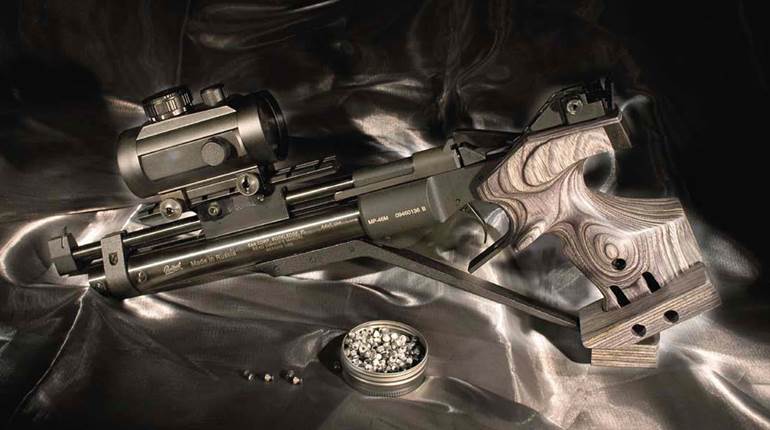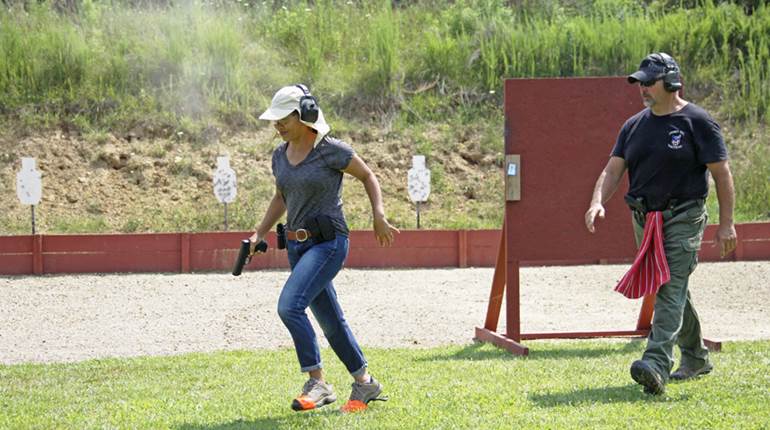
Reliability issues with AR-style rifles can be divided into those which can be remedied by the user, and those which should be referred to a gunsmith. In general, trigger issues, light hits or other failures to fire, malfunctioning selectors, bolt catches or magazine releases, or problems with damaged, defective or improperly installed components, such as gas tubes, gas blocks, bolt assemblies, carriers and so forth, are all best referred to a gunsmith. Additionally, unless you are buying an AR from a reputable gun shop, it’s a good idea to take any newly acquired rifle to a gunsmith to be checked for function, safety, and proper headspace.
Most user-resolvable AR reliability issues center around four problems: failure to feed, failure to extract, short-stroking and failure to eject.
Failure to feed can result from a number of factors, among which are defective ammunition, a chamber that is excessively tight or dirty, insufficient headspace, poor-quality magazines, or magazines that sit too low in the magazine well.
A rough, dirty or carbon-fouled chamber may also lead to a failure to extract, but this issue is most often related to poor extractor tension, caused by a weak extractor spring. Extra-power springs or spring donuts can improve extractor functioning.
Short-stroking occurs when the bolt and carrier do not travel fully rearward upon firing. When this insufficient travel prevents the bolt from picking up the rim of the top cartridge in the magazine on its forward stroke, feeding issues result. Short-stroking can also prevent the fired case from being thrown fully out of the gun. Short-stroking may be associated with a failure to stagger the slots in the gas rings on the bolt, a broken, bent or plugged gas tube, or carbon or dirt in the carrier or upper receiver. Even going from a lighter to a heavier hammer spring may cause a marginally-functioning system to short-stroke.
Failure to eject a fired cartridge case may sometimes be linked to a malfunctioning ejector, blocked gas tube, or a dirty chamber. More commonly, however, both short-stroking and failure to eject are caused by a buffer or buffer spring that is too heavy. Normal A2 rifle buffers weigh 5.1 ozs., while shorter carbine buffers can run from 3.0 ozs. for a mil-spec standard unit to 3.8, 4.6 and 5.4 ozs. for Colt's H, H2 and H3 buffers, respectively. These heavier buffers were designed for use in M4 carbines that are overgassed or suppressed. An alternative to heavier buffers is David Tubb's Carrier Weight System, from Speedlock Systems. This consists of a steel or tungsten weight that fits inside the hole at the rear of the carrier, and adds 2.8 or 3.9 ozs., respectively, to the carrier.
Also note that there are two lengths of buffer springs. According to U.S. Army TM 9-1005-319-23&P, the rifle-length buffer spring runs from 11¾” to 13½”, while the carbine-length can be 10 1/16” to 11¼”. Shorter-length gas systems, such as are found on M4 carbines, often benefit most from heavier buffers and/or buffer springs.
Another common reason for short-stroking and ejection problems is the use of improper ammunition. A rifle or carbine set up to run properly with 5.56x45 mm NATO ammunition may short-stroke when lower-pressure .223 Rem. loads are used. The two cartridges are not identical, although exterior case dimensions are indistinguishable. NATO-spec 5.56 mm ammunition is made to a higher pressure level (60,000 Copper Units of Pressure, or C.U.P) than .223 Rem. (50,000 C.U.P.). Additionally, chambers for the NATO cartridge have a longer leade or freebore, greater leade diameter, and often a different throat angle than .223 Rem. chambers. A solution to this is the .223 Wylde chamber, designed by renowned AR gunsmith Bill Wylde, which has the long freebore and shallower throat angle of 5.56 mm chambers (which reduces pressure), but features the 0.002"-tighter leade or throat diameter of .223 Rem. chambers (improving accuracy). Both commercial .223 Rem. and military surplus 5.56 can be safely fired in a Wylde chamber, with excellent results. Today's AR gunmakers are aware of the differences between the two cartridges, and most all modern barrels have either mil-spec 5.56 NATO or .223 Wylde chambers.
A buffer or buffer spring that is too light for the gas pressure bled from the barrel can cause problems too, and leads to a condition in which the rifle is overgassed. In an overgassed gun, the bolt and carrier may cycle too quickly, causing excessive impact of the buffer at the end of the buffer tube and increasing felt recoil. In a worst-case scenario, as when high-pressure ammunition is fired in a gun with a short gas system, a dirty or rough chamber, and a buffer or buffer spring that is too light, the action will begin to open up while chamber pressure is high, and the case will stick in the chamber. When this happens the extractor can simply tear through the rim of the case, necessitating the services of a gunsmith.
Feeding issues may also be caused by overgassing. A live round may enter the chamber before the fired case fully exits, jamming the action. Occasionally two live rounds are fed into the chamber at once. An oversize gas port can sometimes lead to overgassing, especially when combined with short carbine-length gas systems that bleed gas from the barrel at a point nearer the chamber, where pressure is higher. Even when gun functioning seems acceptable, the violent cycling inherent to overgassing can batter the rifle and increase sight perturbation due to recoil, reducing multiple-shot accuracy.
The way an AR-15 ejects can be diagnostic. The proper ejection pattern can be imagined by visualizing a clock set above the gun, with the butt at 6 o'clock and the muzzle at 12 o'clock. Brass should come out at somewhere between 3 o'clock and 4:30. If cases exit before 3:00, that's a sign of short-stroking; brass is not clearing the ejection port before the bolt starts to slam home, and as a result are kicked forward out of the ejection port. With an overgassed gun, the brass leaves the gun much more to the rear, past the 4:30 position; a heavier buffer or buffer spring is needed.
The weak point of the AR system (as with any semi-automatic arm) is the magazines. There are literally dozens of different magazines, with aluminum, polymer and steel bodies. Some of the popular models include units from AR-Stoner, Brownells, C Products, Magpul and ProMag. Unfortunately, there's enough variance in the tolerances of these magazines, as well as in the dozens of different AR lowers available, that not all mags work equally well in all guns. Moreover, different types of followers and springs are often found. Modern anti-tilt or self-leveling followers seem to work best at preventing nosedive jams. When you have jams, especially related to feeding, try switching to a different brand or type of magazine. If the problem persists with different magazines, its cause probably lies elsewhere. Failure of the bolt to lock back on the last shot may be a magazine issue, but also can stem from a problem with the bolt catch or bolt catch spring.
Proper functioning occurs when your AR feeds reliably, locks up smoothly, and, upon firing, unlocks, extracts the fired case and throws it smartly from the gun, and locks back on the last shot. You must have complete confidence in any firearm you may depend on for survival, and that means testing the gun, its magazines, and your chosen defensive load through hundreds of rounds. Some tweaking of buffers or springs may be necessary, but much of that you can do yourself.
Beyond using good ammunition, good magazines, and selecting proper buffer and buffer spring weights, good functioning is best ensured by regular and thorough cleaning. All manner of problems can be caused by a buildup of powder residue, dirt, carbon, etc. in the gas tube, chamber, carrier, locking lug recesses, etc. Proper maintenance supplies, tools and procedures can be found in publications such as U.S. Army TM 9-1005-319-23&P/U.S. Air Force TO 11 W3-5-5-42, Unit and Direct Support Maintenance Manual or commercial publications such as The AR-15 Complete Owner's Guide, by Walt Kuleck with Scott Duff (Scott A. Duff Publications).





































